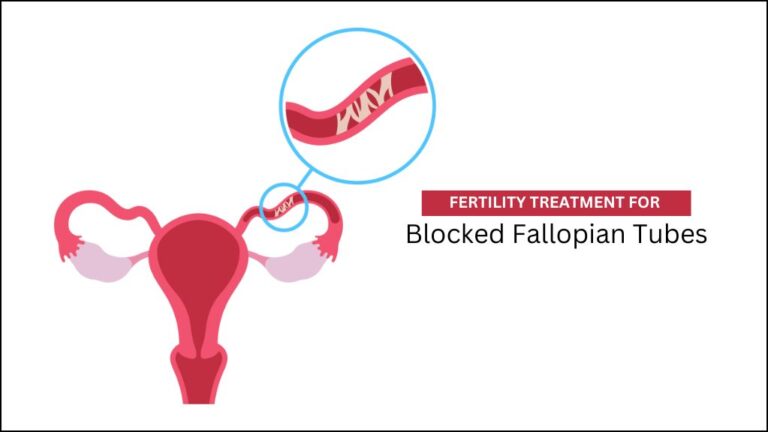Blocked fallopian tubes, a common cause of infertility, can hinder the journey of the egg from the ovaries to the uterus, thus preventing natural conception. We will understand the nature, diagnosis, and treatment options for this condition with Gaudium IVF, the Best IVF Centre in Mumbai.
Understanding Blocked Fallopian Tubes
The fallopian tubes are two thin tubes, one on each side of the uterus, that play a crucial role in conception. They are the pathways through which the egg travels from the ovaries to the uterus. When these tubes are blocked, the egg cannot meet the sperm, making fertilization impossible. Blockages can occur due to various reasons, including pelvic inflammatory disease (PID), endometriosis, pelvic surgeries, or infections such as sexually transmitted infections (STIs).
Diagnosis of Blocked Fallopian Tubes
Diagnosing blocked fallopian tubes often involves several tests. A common method is the hysterosalpingogram (HSG), an X-ray test where a dye is injected into the uterus and fallopian tubes to detect blockages. Another diagnostic tool is laparoscopy, a minimally invasive surgical procedure where a camera is inserted through a small incision in the abdomen to visualize the tubes directly. Sonohysterography and ultrasound can also aid in diagnosis.
Fertility Treatments for Fallopian Tube Blockage
1. Medications
While medications alone cannot unblock fallopian tubes, they can treat underlying causes such as infections. Antibiotics may be prescribed if the blockage is due to PID or an infection.
2. Surgical Interventions
Surgery can be an effective treatment for blocked fallopian tubes, especially if the blockage is due to scar tissue or adhesions.
- Tubal Surgery: This involves removing scar tissue, opening the blocked section of the tube, or creating a new tubal opening. The success of tubal surgery depends on the extent and location of the blockage.
- Salpingostomy: This procedure creates an opening in the fallopian tube if it is blocked by fluid (hydrosalpinx).
- Fimbrioplasty: If the fimbriae (the finger-like projections at the end of the fallopian tubes) are blocked, surgery can repair them to facilitate the movement of the egg.
3. In-Vitro Fertilization (IVF)
IVF is often the most recommended fertility treatment for those with blocked fallopian tubes. In this procedure, eggs are retrieved from the ovaries and fertilized with sperm in a lab. The resulting embryos are then transferred directly into the uterus, bypassing the fallopian tubes entirely. IVF offers high success rates and is a viable option for many couples facing tubal infertility.
4. Tubal Cannulation
This is a less invasive procedure where a catheter is used to clear the blockage in the fallopian tubes. It is often performed during a hysterosalpingogram or laparoscopy. Tubal cannulation can be effective for certain types of blockages.
Success Rates and Considerations
The success of fertility treatments for blocked fallopian tubes varies depending on several factors, including the woman’s age, the cause and extent of the blockage, and overall reproductive health. Surgical treatments may restore natural fertility, but they also carry risks such as ectopic pregnancy, where the fertilized egg implants outside the uterus.
IVF, while more invasive and expensive, often provides the highest success rates for those with tubal blockages. It also reduces the risk of ectopic pregnancy associated with tubal surgeries.
Conclusion
Dealing with blocked fallopian tubes can be challenging, but various effective treatments are available. From surgical interventions to assisted reproductive technologies like IVF, couples have several options to achieve a successful pregnancy. Consulting with a fertility specialist is crucial to determine the best treatment plan based on individual circumstances and medical history. With the right approach, many women with blocked fallopian tubes can achieve their dream of parenthood.
Source: https://www.gaudiumivfcentre.com/blog/fertility-treatment-for-blocked-fallopian-tubes/






Comments